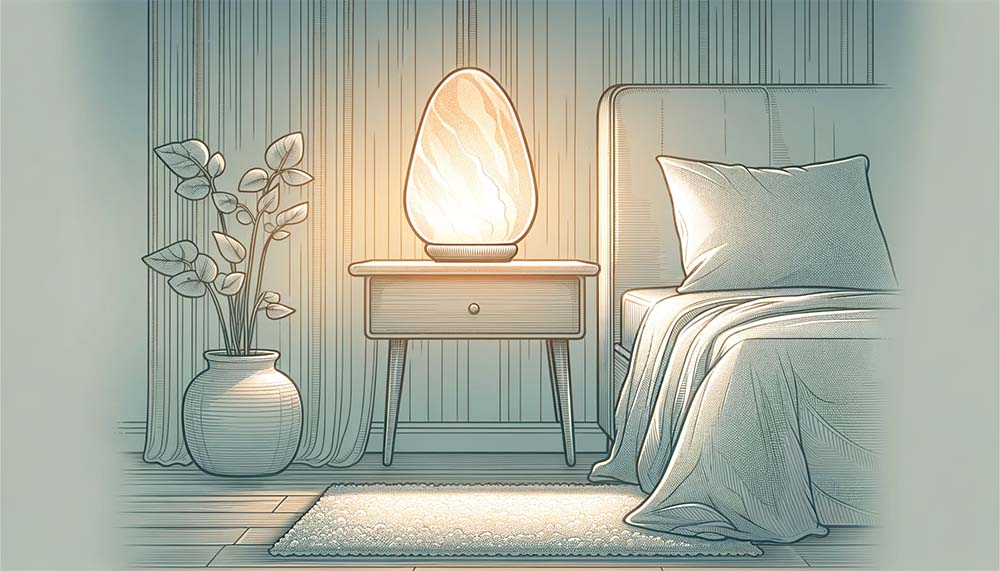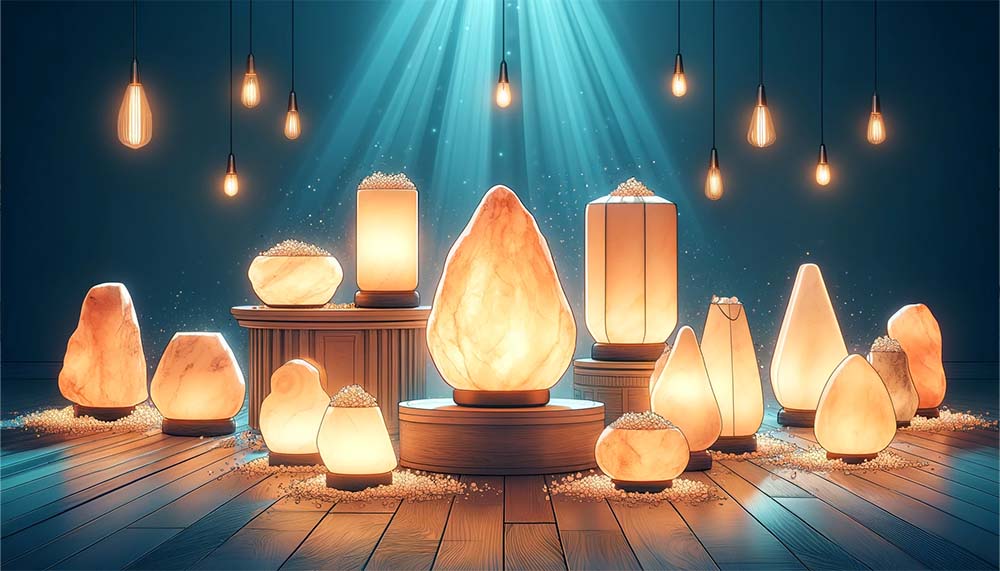Have you ever wondered if those mesmerizing pink salt lamps actually taste like salt? It’s a question that has crossed the minds of many curious individuals.
But beyond their warm glow, these lamps have an interesting characteristic – they indeed taste like salt.
However, before you give in to the temptation of giving your lamp a lick, it’s crucial to consider the potential health and safety risks involved.
We’ll define the intended use of salt lamps, discuss the hygiene concerns, and provide you with a comprehensive understanding of why it’s best to admire their beauty rather than their taste.
So, let’s illuminate the truth behind the salty allure of these captivating lamps.
Taste Profile of Salt Lamps

Ever wondered if those glowing pink salt lamps actually taste like salt? Well, the short answer is yes, they do. Salt lamps are carved from large chunks of Himalayan pink salt, a type of rock salt mined primarily in Pakistan. It’s the same stuff you might sprinkle on your food, only in a much bigger, prettier form.
If you give your salt lamp a little lick — and let’s be honest, many of us have been tempted — you’ll notice it tastes unmistakably salty. This is because it’s made of pure salt, and it has the same basic taste you’d expect from any salt crystal. However, it’s important to remember that these lamps aren’t meant to be tasted or used as a food source. They’re for lighting up your room and maybe adding a bit of ambiance, not for spicing up your dinner.
So, while your salt lamp won’t surprise you with a hidden flavor, it’s best to enjoy its warm glow rather than its taste. Keep the licking to a minimum, and stick to your kitchen salt for culinary adventures.
Health and Safety Considerations

When it comes to salt lamps, their allure can sometimes lead to a lick or two. But before you give in to temptation, consider the contamination risks.
- Contamination Risks: When it comes to salt lamps, their allure can sometimes lead to a lick or two. But before you give in to temptation, consider the contamination risks. These lamps attract dust and household particles, which stick to their sticky surface. Licking a salt lamp might mean ingesting these impurities, which isn’t exactly what you want from your home decor.
- Hygiene Issues: Hygiene is another concern. Our mouths are full of bacteria, and when you lick a salt lamp, you’re transferring those germs onto the lamp’s surface. If someone else touches the lamp and then their face or food, those germs could spread. It’s a bit like double-dipping your chip at a party – not the best idea.
- Excessive Sodium Intake: Salt is essential in our diets, but too much of it is a bad thing. If you’re frequently licking a salt lamp, you could be getting more sodium than you bargained for. High sodium intake can lead to health issues like high blood pressure. So, it’s best to keep your salt intake to what’s on your plate, not what’s on your lamp.
- Pet Safety: Pet owners, take note: salt lamps can be a hazard for your furry friends. Animals don’t always know when to stop, and too much salt can lead to salt toxicity. Symptoms include vomiting, diarrhea, and even seizures. It’s best to keep salt lamps out of reach of pets to prevent any licking sprees.
Intended Use of Salt Lamps

While it’s clear that salt lamps shouldn’t be consumed or licked, they still serve a wonderful purpose in many homes. These unique lamps, carved from Himalayan pink salt, are primarily used for their decorative appeal. When lit, they emit a warm, pinkish glow that can instantly make any room feel cozier and more inviting. They’re essentially the mood lighting of the home decor world, adding a special touch to your living space.
However they also offer a range of appealing benefits that go beyond just their beautiful, soothing glow. The natural properties of the salt can actually help enhance your health and well-being in several ways.
One key benefit comes from the hygroscopic nature of salt, meaning it attracts water molecules from the air. As the lamp warms up, it draws in water vapor along with air pollutants like dust, pollen, smoke particles and other contaminants. These particles get trapped on the salt’s surface, effectively removing them from the air you breathe.
A study found that Himalayan salt lamps could reduce microbial populations by up to 35% in a controlled environment, while another showed they had a small effect on reducing particulate matter concentrations. So in addition to their relaxing light, salt lamps also act as a natural air purifier, especially beneficial for those with allergies or asthma.
The negative ions released by heated salt lamps have also been linked to improvements in mood and stress reduction. Some studies have suggested negative ions can help reduce anxiety and depression symptoms, creating a greater sense of well-being – much like the refreshed feeling you get spending time at the beach or near a waterfall. Basking in a salt lamp’s warm glow may help counteract the excessive positive ions from electronics for a more balanced, soothing atmosphere.
While traditional HEPA air purifiers are more effective for strong air filtration, filtering up to 99.97% of small particles, salt lamps offer a natural complement that can still make a noticeable difference in air quality.
To learn even more about the wide-ranging positive effects of Himalayan salt lamps, check out our in-depth article on the 8 Amazing Benefits of Himalayan Salt Lamps.
Final Thoughts
To wrap it up, salt lamps may be tempting to taste, it’s important to remember that they are primarily decorative items and not intended for consumption. The risks associated with licking salt lamps, such as contamination, hygiene issues, excessive sodium intake, and potential harm to pets, far outweigh any momentary curiosity or satisfaction.
Instead, it’s best to appreciate salt lamps for their intended purpose – providing a soothing, ambient glow and potentially offering some air purification benefits. By understanding the properties and limitations of these unique lamps, you can enjoy their beauty and potential health benefits without compromising your well-being.
Remember, salt lamps are a wonderful addition to any space, creating a cozy and inviting atmosphere. They can help reduce stress, improve mood, and even assist in alleviating respiratory issues. However, these benefits are best enjoyed from a distance, admiring the warm light rather than giving in to the temptation of a salty taste test.
So, let your salt lamp shine, bask in its glow, and appreciate its natural beauty. And when it comes to satisfying your salt cravings, stick to the shaker on your dining table, not the lamp on your nightstand.




